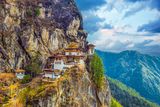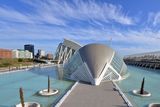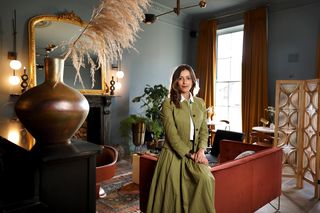Pittsburgh: A dizzying mix of architectural styles rises from the ashes
US City Breaks
Pittsburgh may not strike many Irish people as an appealing destination. For much of its history, it has been closely associated with the steel industry, after all.
In the 19th Century, the city air became so clogged and sooty that businessmen were obliged to change their shirts at lunchtime, and their wives felt compelled to buy the aptly-named Smokey City Antiseptic Laundry Flakes.
Fire and fumes belched from its vast steelworks, pollution seeped into its three rivers, and one visitor memorably described it as "hell with the lid off". This was the crucible of American heavy industry - and during World War II the demand for steel meant the city's mills operated for 24 hours a day.
The result was the highest levels of air pollution ever recorded.
But, by the 1960s, Pittsburgh had begun to slide into what looked like a terminal decay. However, thanks to the foresight of its citizens, the city has avoided much of the fate of other American rust-belt cities. In recent years, it has undergone a radical transformation that is, in its own way, no less remarkable as that of turning coke, iron ore, and carbon into steel. When President Trump cited Pittsburgh as an example of the benefits of a return to fossil fuels, his comments were greeted with dismay by many of Pittsburgh's citizens. They did not want a return to the previous levels of pollution.
The city is now ranked as one of the most easy-to-live-in cities in America, and its restaurants are a Mecca for foodies from throughout the country. It is now more accessible than ever, as WOW air flies from Dublin to Pittsburgh, via Reykjavik.
Jamie at PNC Park, home of the Pittsburgh Pirates
As the city continues to reinvent itself, some of its historic buildings are finding new life. Galleries have appeared in converted warehouses, and stylish hotels have sprung up in the remains of this former industrial city. I stayed in the Ace Hotel housed in an old YMCA building. My room was the last word in cool: full of quirky details and a wonderful power shower. Famished, I headed down to the Whitfield restaurant - a meat-focused eatery set up by one of Brooklyn's best-known butchers, Brent Young. He had organised a tasting in a converted three-storey gym. My steak was tender, juicy, accompanied by fries, mac 'n' cheese, and washed down with a selection of excellent local craft beer.
Driving at night, Pittsburgh's skyline presents a dizzying mixture of architectural styles. There are soaring Gothic skyscrapers, and huge Renaissance revival hotels, sitting beside converted industrial factories and warehouses. It was this huge variety of architecture which inspired Christopher Nolan to use it as the setting for Gotham City in The Dark Knight Rises.
The Omni William Penn Hotel was the last building commissioned by the magnate Henry Clay Frick, one of Pittsburgh's wealthiest industrialists. Frick had managed to survive an assassination attempt by a Russian anarchist, and perhaps, he wanted this hotel to serve as his legacy. Designed on a colossal scale, it was intended to rival the great hotels of Europe. During the era of Prohibition, Pittsburgh's only speakeasy could be found below the hotel lobby. It was so hidden that in the years that followed the repeal of Prohibition, its purpose was forgotten, and it was used as a storage space. In recent years, the Speakeasy has been painstakingly restored to its origins with plush scarlet seating surrounded by lavish flocked wall coverings and a ceiling of shiny tin.
Dark and sensual, cosy and private, it effortlessly captures the elegance and discretion needed during Prohibition. I recommend it as a perfect place to while away the night with a few cocktails.
The famous ketchup-making company Heinz was founded in Pittsburgh in 1869. The Heinz centre is located in the restored Chautauqua Lake Ice Company building. The museum includes some hilariously kitsch examples of early Heinz advertising. There is even a painting commemorating the Big Mac, which was first launched here in 1967.
Primanti Bros in the Strip district was founded in 1933, and is firmly established as a city institution. I ordered one of the signature tall boys - the Double Roast and chilli cheese fries. I was taken aback when it arrived, since it was almost the same size as my head. I worked my way slowly through the half pound of thinly sliced roast beef, double cheddar and parmesan and horseradish mayonnaise.
It may have shortened my life, but it was delicious.
The Mattress Factory is located in the Mexican War Streets neighbourhood, a vibrant area full of colourfully painted buildings, initially intended as a space for artists and writers to live, work and build their own community. Over the years, they have gradually acquired more buildings. Rather than gentrifying the area, the community has been central in helping preserve the unique feel of the neighbourhood. It has a mixture of permanent and temporary exhibits, and is one of the most enjoyable exhibition spaces I have ever visited.
Andy Warhol may have found his fame in New York, but his roots are in Pittsburgh. Born Andrew Warhola, to Slovakian emigre parents in the city, much of his early identity was forged here. When he died in 1987, the city was quick to establish itself as a guardian of his legacy. The Andy Warhol Museum opened within seven years of his death. It is by far the largest museum anywhere in North America that is dedicated to a single artist. It fills seven floors of a vast converted warehouse in the North Shore district. The collection includes versions of some of Warhol's most recognisable work, along with some fascinating taped interviews and examples of his early commercial work. These provide some remarkable insights into Warhol's development as an artist, and is well worth a visit.
Andy Warhol once claimed that, "in the future, everyone will be world-famous for 15 minutes", I can guarantee that Pittsburgh will leave a much longer-lasting impression.
Get there
Jamie stayed at the Ace Hotel. For more info see acehotel.com/pittsburgh. For information on Pittsburgh go to visitpittsburgh.com.
WOW air flies from Dublin to Pittsburgh up to four times weekly from as little as €139.99 one way including taxes. The airline offers low-cost transatlantic travel to 15 US destinations, via Reykjavik, from Dublin.
The WOW Stopover option also allows passengers to explore Iceland on either leg of their transatlantic journey for an unlimited time. That’s two getaways for the price of one.
For more info see wowair.ie.
Join the Irish Independent WhatsApp channel
Stay up to date with all the latest news














